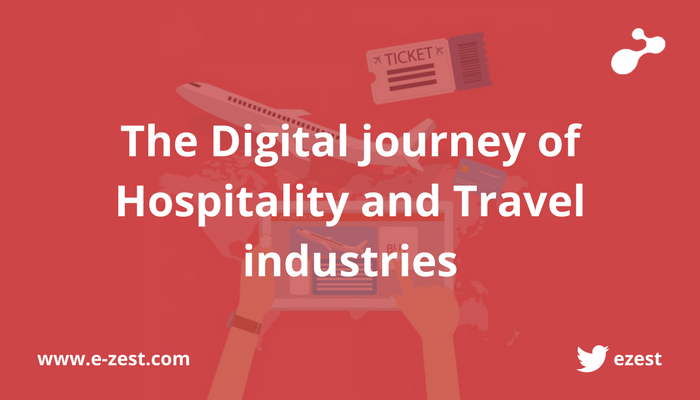I have always avoided going to the movies to watch sci-fi films, because I could not imagine a future where we all function as robots or spacemen. It is not that I had a limited imagination; it is just that I have always preferred stories based on reality. This may be the reason why Virtual Reality as a technology never appealed to me. I could never really comprehend the notion of an entirely fantasy world. However, as I stepped into the tech world, I was introduced to a technology grounded in reality that allows us to augment aspects of it; I was all ears even though this was not something entirely innovative for me. I have avidly been using filters provided by Snapchat and Instagram for a while now. I just never realized that this was Augmented Reality (AR)at work. Some of my favourite consumer brands like Ikea too have incorporated AR. I believe, however that the scope of AR is vast, exciting, and futuristically noble.
For humans imagination is at the core of AR. It is as if we all have AR filters fitted into our minds, especially at that moment when we have wanted to do things, but hold ourselves for fear of embarrasment. How many of us have imagined dancing in the midst of a traffic jam? I see quite a few hands raised. Next time you slip on your headphones and turn up that favourite Punjabi number, you might just see yourself do it in flesh, thanks to AR! This makes us wonder whether the world we live in is real or whether we are all living in one giant simulation playing a fictional character. No one is denying us our human existence, yet we also cannot deny the impression of technology on our lives. Soon it may become difficult to distinguish reality from fantasy. I may not live to see that day, so for now, the only way I see forward is humans creating simulations that are identical to reality.
The more I think about it the more I get muddled. It is like an inception of one reality into another. So since it is here, let us employ it constructively in domains beyond gamification and social media. Real life adoption of AR in the field of medicine, manufacturing, education, aerospace and urban development have helped solve some of the most critical issues of all time. In a short span of 3-4 years since its inception, Augmented Reality has changed the way the world is progressing.
I am more fascinated to see how government and development institutions can use this technology. India for instance has been making impressive progress each year in the field of Information Technology. It is therefore breeding ground for application of the technology as well. The use of AR in the Mumbai Coastal Project is remarkable. With the Government of India heavily consumed in the Smart City Mission,there is no better time to turn the tables to another issue that also could also benefit from exercising AR technology-Swach Bharat Abhiyaan (Clean India Project). A clean city definitely needs fewer slums, clean rivers, and a sight clear of garbage dumps. But the first step is the envisioning, and making the goal believable, a task that can be achieved with the employment of AR.
It is time to be done with complaining about trash, filthy rivers and crumbling infrastructure. Your country does not have to be another Europe, yet something needs to be done to show people how an alternative future would look.
On the bus ride from work today, I pondered how I could go from complaining to finding solutions. The sight of a kid bathing in the open, or the barren land that had become a garbage dumping ground, or the stench from the city's major river have triggered some questions in my mind. How does one go about solving problems like infrastructure, public transport, pollution, waste disposal and so on, and more importantly how can AR as a technology help to pave the way for solutions in developing countries?
The concept of a role model works well when motivating athletes, and children. Role models most often than not, come from the same humble background as the person you are attempting to motivate. It is always the story of rags to riches that becomes epic. Therefore, if you want to make a future believable to residents of a slum, you should show them their own story in an augmented setting. Chances are that people will be receptive to the idea of living in a decent accommodation if you show them what it would look like for them to live there. If we showed the same people an image of a clean street in Europe, the dream is farfetched and discouraging. This is where AR can make a showing.
Show people clean rivers, and you may encourage a clean river project. Unfold a ‘no slum’ city, and you will garner the much-needed support of the very people you are trying to impact.It can therefore be claimed that with the help of AR, governments of developing countries can have a better visualization of new infrastructure before the plan for transformation is implemented. This helps better understand the possibility of achieving an improved infrastructure, and its possible benefits without risking public interest. This also helps speed the execution process at the government level.
AR has also been utilized to show how revamping the public transportation system and constructing new roadways and parks can help with reduction of pollution and with city beautification projects in a number of countries, which would definitely help boost tourism and lifestyles in there. Since you are witnessing the project before implementation, you are able to identify challenges and come up with solutions, which would save a ton of capital and time.
Incontestably, an initiative of such a grand scale is mired with challenges. Finding AR developers who would devote their entire time to this initiative will be like finding a needle in a haystack.Private IT companies would have to invest capital in training their current employees on AR technology. And current engineering students would have to be lured to pursue AR as a technology. It will also take tremendous efforts to reach out to people who you want to impact, and most importantly a futuristic project such as this demands a great deal of patience, and capital. Since developing countries do not have the financial means to independently implement these projects, developed countries may have to contribute.
Per contra, the advantages definitely surpass the disadvantages, which makes the adoption of AR in government endeavours worth the investment.
The human mind is a curious tool and AR is its new toy! The mission Digital India would be incomplete with technology making its way deep into India to improve the lifestyle of a majority of its population. Chances are there are other countries out there that could replicate India’s path. Their reality too can be augmented to pave the way for development. The rich using technology does not make news, the poor being impacted by it does!

.png)



